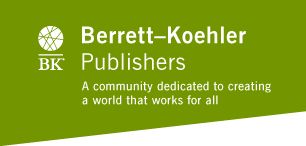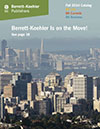An interview with Steven Snyder
Author of LEADERSHIP AND THE ART OF STRUGGLE
Q: Counter to commonly held beliefs about leadership struggle, you write that great leadership is signified by struggle. Can you explain what you mean by this?
A: Struggle is often viewed as a problem – something to be overcome quickly and without too many people knowing. Yet, struggle is a central component to great leadership as it provides a growth opportunity of unparalleled proportions.
Consider Steve Jobs. In 1983, Jobs introduced the Lisa, Apple’s first computer with a graphical interface. In a presentation to journalists, Jobs was charismatic, passionate, and nothing short of mesmerizing. Yet behind the bravado was a highly conflicted man, who was struggling on many different levels. The struggle continued as Jobs’ aggressive, disrespectful management style alienated him for colleagues and ultimately led to him leaving the company he helped found.
Two decades later, a very different Jobs emerged to deliver the 2005 Stanford University commencement address. He had confronted his struggles, navigated challenges, and went on to become one of the most influential leaders of our time. Without struggle and the growth opportunity it provided, it is doubtful Jobs would have ever risen to such greatness.
Q: In the book, you talk about adaptive energy. What is adaptive energy and why is it so important for leaders?
A: When leaders are in the midst of struggle, their ability to recognize what is unfolding around them and adapt their energy to make informed, well-reasoned choices is critical.
Adaptive energy aligns leaders’ actions both with the external circumstances necessary for success and with their inner values and principles. It allows leaders to listen to feedback and incorporate new learning while remaining true to themselves.
Q: You outline a set of core practices for increasing adaptive energy and growing through struggle. How did you arrive at these practices as the key to, as you write, mastering the art struggle?
A: In my research, I carefully studied struggle stories of 93 leaders, encompassing 151 distinct struggle episodes. I listened to how these leaders navigated through their challenges. The practices in the book are a synthesis of the collective wisdom of this group.
Q: One grounding practice you suggest is centering your mind, body, and spirit. Why is this important for leaders in the midst of struggle?
A: Leaders need some way to anchor and balance themselves in times of turbulence. Whether through mindfulness, meditation, listening to music, walks, painting, or any other variety of activities, centering activities help leaders remain grounded despite the chaos around them.
Q: In your dozens of interviews—including many current and former CEOs as well as high level non-profit, government and military leaders—what did you find most surprising as it pertains to struggle?
A: Without exception, every leader had his or her own personal story of struggle. This tells me that struggle is a universal hallmark of leadership, something that every leader goes through.
What surprised me was how many “aha” moments leaders had and the insights they gleaned during our conversations. Without a forum to openly discuss their struggles, leaders had kept their struggles quietly bottled up. With the opportunity to discuss their challenges, light bulbs began to go off, and these leaders came to new insights about their growth. This interview process highlighted for me the importance of open dialog surrounding struggle as a way to help leaders synthesize their learning more comprehensively.
Q: Your career path has taken many interesting turns. How has this shaped your understanding of struggle?
A: I was very fortunate to work at Microsoft in the 1980s. We were a small company with big dreams, and the struggles were numerous. From my close-up perch, I observed how Bill Gates navigated through the challenges, and I include several of these stories in the book.
Another opportunity to understand struggle first-hand came when I started Net Perceptions, an Internet company, in 1996. Starting a company from scratch is very different than going into a company that is already operating. Everything needs to be built from the ground up, and the pace of growth was far faster than even the frenetic pace at Microsoft.
Q: If readers took away one thing from this book, what do you hope that would be?
A: One of my goals in writing this book is that the taboo surrounding leadership struggle would be dispelled and replaced with a healthier, more accurate view of struggle. My hope is that leaders walk away with an understanding that struggle is par for the leader course, but also, that they can master struggle – using it as an opportunity for their greatest growth.
Click here to read more about Leadership and the Art of Struggle!
 0 items in cart
0 items in cart









